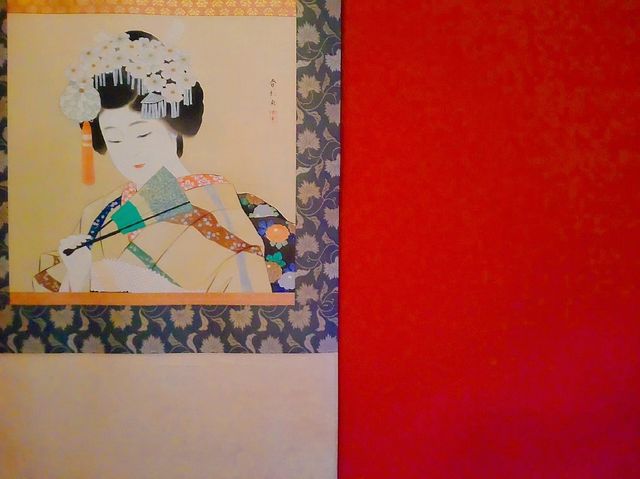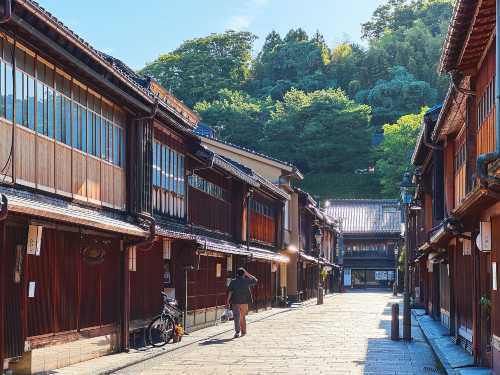Popular Trip Moments
Solo Journey in Hokuriku | Solo Traveler's Perfect Day at Kenrokuen Garden** 🌸🏯 | Solo Traveler's Guide to Ishikawa Prefecture: Japan's Cultural Treasure Box** 🎎🏔️ | 2-Day Kanazawa Tour: Meditative Temples and Modern Art Symphony | ANA Crowne Plaza Kanazawa Standard Double Room | Tea Houses, Samurai Streets, and Shirakawa Views: 3 Days in Kanazawa 🇯🇵 🦪 | Strolling Through Kanazawa's Kenrokuen: A Japanese Haven of Light and Shadow | A fulfilling day trip in Kanazawa: Recommended itinerary | Hokuriku🇯🇵 See the world with a relaxed mood 🌎 | Kanazawa|The beauty of the flowing water in Kenrokuen Garden | Kanazawa | The Timeless Beauty of Kenrokuen's Kasumigaike Pond | Kanazawa | A Japanese Moment by the Pond at Uchihashi-tei in Kenrokuen | Kanazawa | Kenrokuen Teahouse Architecture [Yugotei and the Chozu-bachi of Hakugasekikin] | The Elegance of Hyotan Pond in Kenrokuen, Kanazawa | Kanazawa | Seisonkaku in Kenrokuen | Kanazawa | Iconic Scenery of Kenrokuen: The Kotoji Lantern | Oyama Shrine: The intersection of history and culture ⛩️ | Kenrokuen: A Verdant Paradise in the Height of Summer | Kanazawa Castle, a Place Where History and Greenery Meet | Kanazawa Castle Park, a favorite green stroll for locals 🌳 | Unveiling the Unique Omikuji and Charm of 'Kima-chan' at Ishikura Shrine | 〔Kanazawa Inari Shrine〕 The Thousand Torii Gates next to Ishikura Shrine | Photosynthesis Stroll at Shiinoki Ryokuchi Seseragi | Kanazawa Riverside Prayer Spot: Asanogawa Inari Shrine | The Beauty of Japanese Temari Craft: Kanazawa Handicraft Exhibition at Shiinoki Guest House | Kanazawa Castle Park | Recommended Nagoya Suburban Small Town Tour Itinerary | Kanazawa: The Perfect Solo Trip for the Spontaneous Traveler! 🌸 | Take a stroll along Higashiya Tea Street and take a closer look at the beauty of Kanazawa Machiya 🏮 | [Ishikawa🇯🇵] Enjoy a delicious seafood bowl at Omicho Market in Kanazawa.
Recommended Attractions at Popular Destinations
Popular Attractions in Bangkok | Popular Attractions in Manila | Popular Attractions in Tokyo | Popular Attractions in Taipei | Popular Attractions in Hong Kong | Popular Attractions in Seoul | Popular Attractions in Kuala Lumpur | Popular Attractions in Los Angeles | Popular Attractions in Shanghai | Popular Attractions in New York | Popular Attractions in Shenzhen | Popular Attractions in Osaka | Popular Attractions in Singapore | Popular Attractions in London | Popular Attractions in Guangzhou | Popular Attractions in San Francisco | Popular Attractions in Beijing | Popular Attractions in Macau | Popular Attractions in Bali | Popular Attractions in Jakarta | Popular Attractions in Paris | Popular Attractions in Ho Chi Minh City | Popular Attractions in Istanbul | Popular Attractions in Phuket | Popular Attractions in Chicago | Popular Attractions in Seattle | Popular Attractions in Toronto | Popular Attractions in Orlando | Popular Attractions in Cebu | Popular Attractions in Chiang Mai
Popular Restaurants in Kanazawa
Akakara, Kanazawa Eki-Mae | Benkei | Daian | ANA Kuraun Puraza Hotel Kanazawa Chugokuryori Karin | ANA Kuraun Puraza Hotel Kanazawa Nihonryori Unkai | All Day Dining The Garden House | Cascade Dining | Kenrokutei | Oumicyoukaisen'ichibaryouri Ichi No Kura | Shogyotei | Bistro Yuiga | Sushi Rekireki | Sushi Mitsukawa | Teppanyaki Restaurant Kaga | Raspberry | Taiga Noodles | FIVE – GRILL & LOUNGE | makinonchi | L'Ostal | Gorohachi | Kuroyuri | Sushi Kinari | Kaikaro Cafe | Kanazawa Sekitei | European Cuisine La PLAGE (Hotel Nikko Kanazawa) | Teppanyakikaga | ROI | Tempurabunen | Shungyotei | Dining Kura
Popular Ranked Lists
Popular Luxury Hotels in Shibukawa | Top 50 Must-Visit Restaurants in Beijing | Popular Best Things to Do in Shannan | Popular Luxury Hotels Near Smaliavichy District | Top 50 Must-Visit Restaurants in Osaka | Popular Best Things to Do in Guiping | Top 10 Best Things to Do in Jingxi | Top 10 Best Things to Do in Enshi Prefecture | Top 50 Must-Visit Restaurants in Shenzhen | Top 50 Must-Visit Restaurants in Florence | Popular Luxury Hotels Near Balbieriskio seniunija | Top 10 Best Things to Do in Baoshan | Popular Best Things to Do in Golmud | Top 50 Must-Visit Restaurants in San Francisco | Popular Premium Hotels Near Kamyzyaksky District | Top 50 Must-Visit Restaurants in George Town | Popular Luxury Hotels in Andernach | Top 50 Must-Visit Restaurants in Chaozhou | Top 50 Must-Visit Restaurants in Hong Kong | Popular Best Things to Do in Yuyao | Top 50 Must-Visit Restaurants in Yangzhou | Popular Best Things to Do in Zhijiang | Top 50 Must-Visit Restaurants in Athens | Top 50 Must-Visit Restaurants in Bruges | Top 50 Must-Visit Restaurants in London | Top 50 Must-Visit Restaurants in Bali | Top 50 Premium Hotels near Saint-Herblain | Popular Best Things to Do in Heyuan | Popular Best Things to Do in Xinyang | Top 50 Must-Visit Restaurants in Barcelona
About
Payment Methods
Our Partners
Copyright © 2025 Trip.com Travel Singapore Pte. Ltd. All rights reserved
Site Operator: Trip.com Travel Singapore Pte. Ltd.
Site Operator: Trip.com Travel Singapore Pte. Ltd.























